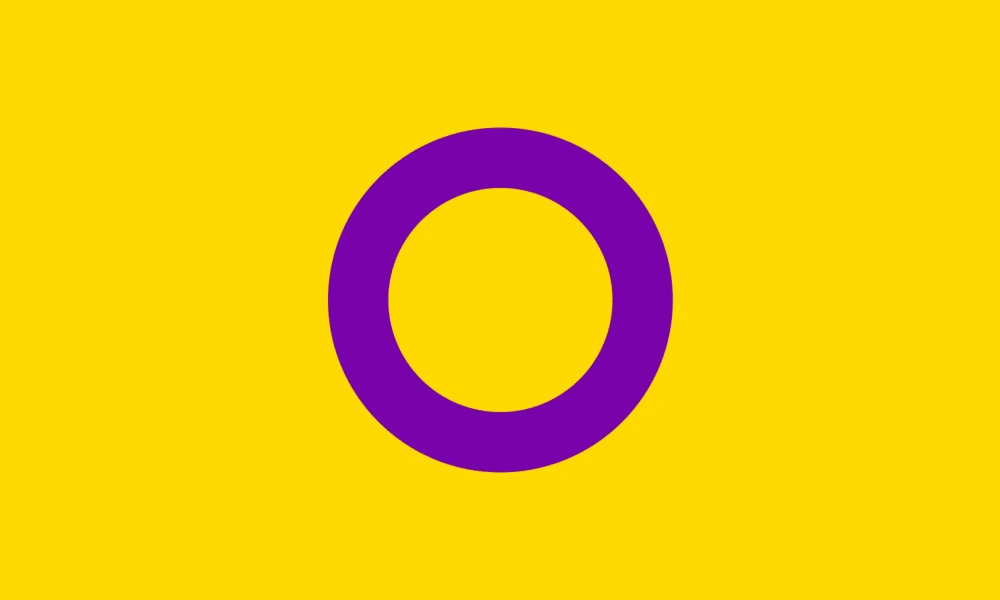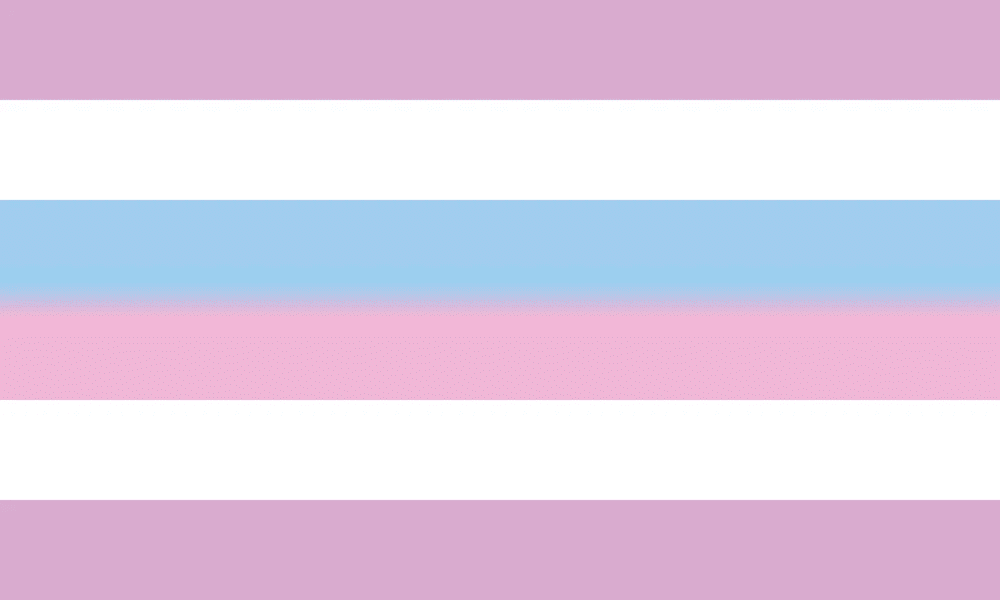Intersex – What is it? What does it mean?
Intersex is an umbrella term that typically refers to intersex variation in human anatomy, hormones, and/or genes that cannot be classified as typically male or female bodies. These atypical sex characteristics may be visible at birth, while others may not be apparent until puberty.
It is important to note that intersex meaning relates to biological characteristics like sexual anatomy, hormone levels, and sex chromosomes. Intersex traits are distinct from sexuality and/or gender identity. Intersex people may be straight, gay, lesbian, bisexual, queer, asexual, etc. They may also fit typical binary notions as male or female, identify as neither, non-binary, agender, transgender, cisgender, and many other genders.
Table of Content
Terminology
According to Merriam-Webster Dictionary, the term intersex is a noun that refers to an individual having the condition of intersexuality. The first known meaning of the word appeared at the beginning of the 20th Century.
The word is an umbrella term that describes people’s bodies that fall outside the binary genders of male and female. People who are born intersex may have innate sex characteristics that are of female gender and hormone levels of male gender and vice versa.
According to statistics, between 0.05 and 1.7% of the world’s population is born with intersex traits. This means that intersex babies are born just as frequently as red-haired infants. Intersex variations may not always be noticed at birth. In fact, not all people who are born intersex know about their intersex anatomy. Some may live their whole lives thinking they were born the sex assigned at birth.
Intersex may also mean the person’s reproductive organs do not match their external genitals. For example, a person who was born intersex may have male genitals but female internal sex organs.
Intersex anatomy does not boil down to external and internal sex organs. It may also mean the person has male hormones or chromosomes but a reproductive system of a female vice versa. These variations may be noticed in intersex babies at birth if external genitalia does not fit the typical male or female sexual anatomy. Sometimes the infant will have ambiguous genitalia when individuals are born. Still, at other times, it is only noticed in puberty when male or female hormones cause the differences to develop.
History
Ancient Times
Intersex anatomy is a naturally occurring variation in humans. Therefore, intersex people have existed as long as all humans have. In Ancient Greek mythology, the most prevalent myth associated with intersex people is the story of Hermaphroditus, the child of Hermes and Aphrodite, that has undetermined intersex characteristics. This is where the outdated and offensive term hermaphrodite comes from.
17-19th Century
17th century English judge Edward Coke wrote English succession law as the following:
“Every heire is either a male, a female, or an hermaphrodite, that is both male and female. And an hermaphrodite (which is also called Androgynus) shall be heire, either as male or female, according to that kind of sexe which doth prevaile.”
During the Victorian era, medical authors attempted to find the typical definitions of the fact that humans could be born with an unusual mix of both sexes. Doctors tried to coin a precise biological definition of the term true hermaphrodite. The term stood for an individual who has both ovarian and testicular tissue, verified under a microscope. The male pseudohermaphroditism applied to a person with testicular tissue but either female or ambiguous sexual anatomy. The female pseudo-hermaphrodite for someone with ovarian tissue, but either male or ambiguous sexual anatomy.
20th Century
Richard Goldschmidt coined the term intersexuality in his 1917 paper. The first suggestion to replace the offensive term hermaphrodite came from a British specialist in the 1940s.
Medical professionals began performing surgeries on intersex infants to fit the gender binary some time in the 1920s. This practice became more common in the 1950s, and 60s Parents of intersex babies were told that fitting an assigned gender would be more beneficial for the child’s health. Some children were never told about the procedure at birth.
Many intersex support groups originated in the 1990s. Intersex advocates started raising awareness of medical interventions and seeking legal sex recognition. The Intersex Society of North America was formed in 1993. This advocacy group helped highlight the harmful practices individuals born intersex faced.
Thanks to the intersex advocates, more intersex people began sharing their experiences associated with medical interventions without content.
Present Day
Today, awareness is on the rise. There are many support groups and organizations around the world that work with intersex people as well as their parents. Medical professionals are learning more about intersex people and new advantages in helping make informed decisions. The American Psychological Association now has new recommendations in place for parents. Many countries recognize it as legal sex.
Flag & Symbols
The most commonly used and officially recognized flag was created by Morgan Carpenter in 2013. This flag features yellow and purple colors. These colors are alternatives to blue and pink, which tend to symbolize boys and girls, respectively. The purple circle in the middle stands for wholeness and completeness, as well as the right to be who and how we want to be.
The official flag that features an unusual mix of yellow and purple.
There is an earlier flag design made by Natalie Phox in 2009. This flag is a bit controversial as some claim it to be a bigender flag designed for non intersex people, whereas the author of the flag, Phox, says the design was specifically intended to represent intersex people.
There are also two symbols currently available online. The most common symbol is the Mercury symbol. It is used to complement the Venus and Mars symbols that represent the female and male, respectively. The symbol was originally used for hermaphroditism. It depicts the staff of the Roman messenger god based on the caduceus. The symbol may also be used by non-binary, androgyne, and gender-fluid individuals.
Another symbol for intersex people is the astronomical symbol for Earth. It was chosen since the planet is in between Venus, which traditionally stands for female, and Mars, which often stands for male symbolism. This symbol is sometimes a more preferred symbol for intersex people.
On occasion, intersex people may be represented by a combination of male and female symbols that said they may be used by non intersex people as well.
Intersex Variations
It is difficult to track the exact number of births that are intersex. However, according to most statistics, intersex people make-up up to 1.7% of the population. This means that about 1 in every 2,000 babies are born with intersex traits.
These traits may be different. There are currently about 60 different conditions. Some of the most common types are congenital adrenal hyperplasia, Klinefelter syndrome, hypospadias, and androgen insensitivity syndrome.
46, XX INTERSEX
People with this condition tend to have external genitals that appear to be male or unclear. They may have female chromosomes, ovaries, and a uterus. The clitoris may look like a penis due to its enlarged size. There are several possible causes:
- Testosterone taken or encountered by the mother during pregnancy.
- Male hormone-producing tumors in the mother: These are most often ovarian tumors.
- Aromatase deficiency: This one may not be noticeable until puberty. Aromatase is an enzyme that usually converts male to female hormones. Too much aromatase activity can lead to excess estrogen (female hormone) and the inability to convert testosterone or too little to 46 XX chromosomes. At puberty, children with XX chromosomes, who had been raised as girls, may experience atypical development.
46, XY Intersex
People with this condition tend to have genitals that appear female or unclear. They may have male chromosomes, but the testicles will be absent or not fully formed. They may or may not have a uterus and ovaries. Therefore, it requires the adequate production and function of hormones. XY chromosomes have many possible causes:
- Problems with the testes: If the testicles do not form properly, it will lead to undervirilization. There are a number of possible causes for this, including XY pure gonadal dysgenesis.
- Problems with testosterone formation: Testosterone is formed through a series of steps. Each of these steps requires a different enzyme. Deficiencies in any of these enzymes can result in inadequate testosterone and produce a different syndrome of XY chromosomes.
- Problems with using testosterone: Some people have normal testes and make adequate amounts of testosterone but still have conditions such as 5-alpha-reductase deficiency or androgen insensitivity syndrome.
- People with 5-alpha-reductase deficiency lack the enzyme needed to convert testosterone to dihydrotestosterone (DHT). There are at least five different types of 5-alpha-reductase deficiency. Some babies have normal male genitalia, some have typical female genitalia, and many have something in between. Most change to external male genitalia around the time of puberty.
- AIS is the most common cause of 46, XY intersex. It has also been called testicular feminization. Here, the hormones are all normal, but the receptors don’t function properly.
True gonadal intersex
People with this condition may have female chromosomes but also have testicles and ovaries. The genitals can look female, male, or both. The person must have both ovarian and testicular tissue. This may be in the same gonad (an ovotestis), or the person might have one ovary and one testis. The person may have XX chromosomes, XY chromosomes, or both. The external genitals may be ambiguous or appear to be female or male.
Complex
Many chromosome patterns other than simple 46, XX, or 46, XY can result in disorders of sex development. These do not result in a condition in which there is a discrepancy between internal and external genitalia. However, there may be problems with sex hormone levels, overall sexual development, and altered numbers of sex chromosomes.
Differences
Intersex and Transgender
Intersex people are typically born with a medical diagnosis. Being intersex means that a person is born with genes or anatomy that are not typically female or male. These are individual’s enduring physical aspects that are most likely discovered at birth or in early childhood.
Transgender people report that they have internal knowledge of gender identity. This means that a transgender person is usually born with the same anatomy and genes to match their sex at birth, but their internal gender identity is different from external factors.
Intersex and Asexual
People who are intersex are not necessarily asexual. Granted, there are intersex folks who identify as a-spec. Intersex has to do with people’s anatomy, genes, and hormones. Asexual refers to a person’s sexuality.
People who are asexual have little or limited interest in sexual activity.
Pronouns
Intersex people can have many different gender identities. They may identify as male, female, neither, non-binary, cisgender, transgender, agender, genderfluid, and so on. This means people who are intersex use a variety of different pronouns ranging from gender-specific he/him or she/her to gender-neutral they/them to neopronouns of their choice.
Remember, it is crucial to use inclusive language at all times. If you are unsure of the person’s preferred pronouns – ask them. Never assume someone’s pronouns based on their gender identity or expression. Do your best to always share your pronouns in written and oral communication.
Myths
There are many myths associated with intersex people. Some of them are:
- All intersex people identify as LGBTQ+
No, not all intersex people identify with being a part of the LGBTQ+ community. Some people do, and some do not. Never assume that someone is a part of the community.
- It is the same as trans.
We’ve addressed this above. Intersex is about anatomy, genes, hormones, whereas being trans is about the internal sense of one’s gender.
- People can tell
Not really. Intersex includes nearly 60 different conditions. There really is no way to tell whether the person is or is not intersex just by looking at them
- Are there any non-American Intersex people?
Yes, there are! People who are intersex are of many different races, ethnicities, nationalities, and cultures.
- Intersex bodies are all the same.
No, they’re not! People have unique bodies. Intersex people have unique bodies. We celebrate all bodies regardless of their shape, size, genitalia, and other characteristics!
Using the word hermaphrodite is not offensive.
It is EXTREMELY offensive. Never use this word unless referring to a historical account of intersex people. This is an outdated term that only adds to the confusion around intersex people.
Discrimination
In addition to the many myths, intersex people continue to face discrimination. Since their bodies can be seen as different, folks are often stigmatized in societies around the world.
Intersex people often face bullying and harassment. They may be subjected to verbal and physical abuse, including severe violations of their human rights. This may not be limited to their workplace or a place of study. Some may face extensive barriers when requesting intersex on their identification. That said, many countries around the world recognize intersex as the official third sex.
It is important to note that not all intersex people want to have surgery to change their bodies. It is a form of discrimination and should not be forced upon anyone at any age.
Can Intersex People Have Children?
Contrary to popular belief, not all intersex people are infertile. Some intersex folks can and often do have children of their own. If a person has a reproductive system that functions properly, they may be able to conceive a child. For example, if someone has a functioning penis and produces sperm, they may get someone pregnant. If the person has a uterus and ovaries, they may be able to get pregnant and carry a child to term.
Intersex Health
Intersex physical and mental health is probably the most essential chapter here. It is crucial to underline that being intersex is a naturally occurring variation in humans. That said, there are many medical interventions that continue to take place without the consent of an intersex person. About 1 or 2 people in 100 are born with an intersex condition in the United States.
Doctors sometimes perform medical surgeries on intersex babies at birth to make them fit the gender binary. This raises the question of whether medical professionals should decide someone’s sex at birth. Unfortunately, it has become common practice to subject intersex people to unnecessary medical procedures in order to conform to the binary sex stereotypes.
Some of these procedures are irreversible and cause permanent physical damage like infertility, incontinence, loss of sexual sensation, pain, as well as mental damage, including anxiety, depression, and other mental health issues. These surgeries are often performed without full and informed consent not only of the intersex person, who is most likely too young to make the decision but also their parents.
These medical procedures violate people’s rights to physical integrity. Despite all of the above, these operations are often justified based on cultural, societal, and gender norms. Some believe they will help people feel better in society. These discriminatory attitudes even justify forced surgeries in order to fit societal binary sex norms in many places around the globe. Some even claim to be beneficial for intersex people. These beliefs are harmful.
Many intersex people who were exposed to surgery as children underline the struggles they faced growing up. Some suffer significant mental and physical trauma, including scarring, infertility, chronic pain, anxiety, depression, and more. Many also feel they were forced into a gender category they do not identify with.
Intersex people should be protected from violations of their rights. Whenever such violations occur, they should be investigated and alleged perpetrators prosecuted. Victims should have access to effective remedies, including redress and compensation.
Law Changes
In 2013, Australia was the first country to include intersex status as a stand-alone prohibited ground of discrimination. The country enacted the Sex Discrimination Amendment – Sexual Orientation, Gender Identity, and Intersex Status Act. The Australian Senate also carried out an official inquiry into the involuntary or forced sterilization of intersex children.
In 2015, Malta adopted the Gender, Gender Expression, and Sex Characteristics Act. This was the first law of its kind to prohibit surgery and treatment on the sex characteristics of children without informed consent. The law also prohibits discrimination on the basis of sex characteristics.
Intersex Health Study
The first US study concerning the mental and physical health status of intersex adults was recently published. Its lead author Dr. Jason D. Flatt, Ph.D. assistant professor at the School of Public Health, University of Nevada, Las Vegas, says: “The findings highlight the importance of educating healthcare professionals on how best to meet the needs of patients with sex differences.”
The study found some alarming numbers. According to the findings, more than half of the participants (53.6%) described their mental health as fair or poor.
Younger intersex people reported much higher numbers of mental health issues than older respondents. 28.2% of younger intersex people reported poor mental health, compared to 7.2% of older respondents.
As far as mental health diagnosis goes, 61.1% of respondents reported having had a depressive disorder, 62.6% an anxiety disorder, and 40.9% posttraumatic stress disorder PTSD.
Again, younger intersex individuals reported anxiety much more than older respondents. 71.2% of younger people vs 50.7% of older respondents reported having had an anxiety disorder
Nearly one-third of participants in the survey reported having attempted suicide – that is 31.8%.
Dr. Jerel P. Calzo, Ph.D., MPH, associate professor at the School of Public Health at San Diego State University, says the study is welcome to research.
“This study represents a substantial effort to increase knowledge about the physical and mental health experiences of intersex adults in the US and sets a precedent for additional work in this area. In addition to raising awareness of the diverse physical and mental problems intersex adults face, the findings shed light on the contributions of social determinants of health, particularly socioeconomic indicators which can affect physical and mental health”.
How To Support Intersex People?
Because of the many challenges, people who are intersex may have feelings of loneliness, depression, and anxiety. It is important to always show your support and be an ally to intersex people 365 days a year.
Some of the ways you can help Intersex people feel more accepted in society are:
- Raise awareness of intersex conditions
- Educate yourself and others on what it means to be intersex
- Join community organizations that work with intersex youth
- Post support messages on social media
- Attend conferences and events
- Donate to organizations that help intersex people get legal recognition
Always remember, being an ally does not take much effort. You can be an active listener, offer advice when asked for it, help raise awareness at school, college, university, or work. There are several days and weeks throughout the year that aim to raise awareness of intersex conditions. You can join events to mark them as well as contribute to them online and offline.
October 26 – Intersex Awareness Day
Intersex Awareness Day marks the first public demonstration by intersex people in North America. Morgan Holmes and Max Beck of Intersex Society of North America (ISNA), which no longer exists, were joined by allies from Transexual Menace and other organizations for a demonstration in front of the American Academy of Pediatrics on October 26, 1996, in Boston, Massachusetts.
November 8 – Intersex Day of Solidarity
Intersex Day of Solidarity which is sometimes known as Intersex Day of Remembrance, takes place on November 8. The Day marks the birthday of Herculine Barbin, a French intersex person whose memoirs were later published by the philosopher Michel Foucault. A Canadian spokesperson for the Organisation Intersex International issued a call for all people interested in intersex human rights to mark the Day.
Gallery
 Intersex flag
Intersex flag
 Alternative Flag
Alternative Flag
 Mercury Symbol
Mercury Symbol
 Earth Symbol
Earth Symbol


